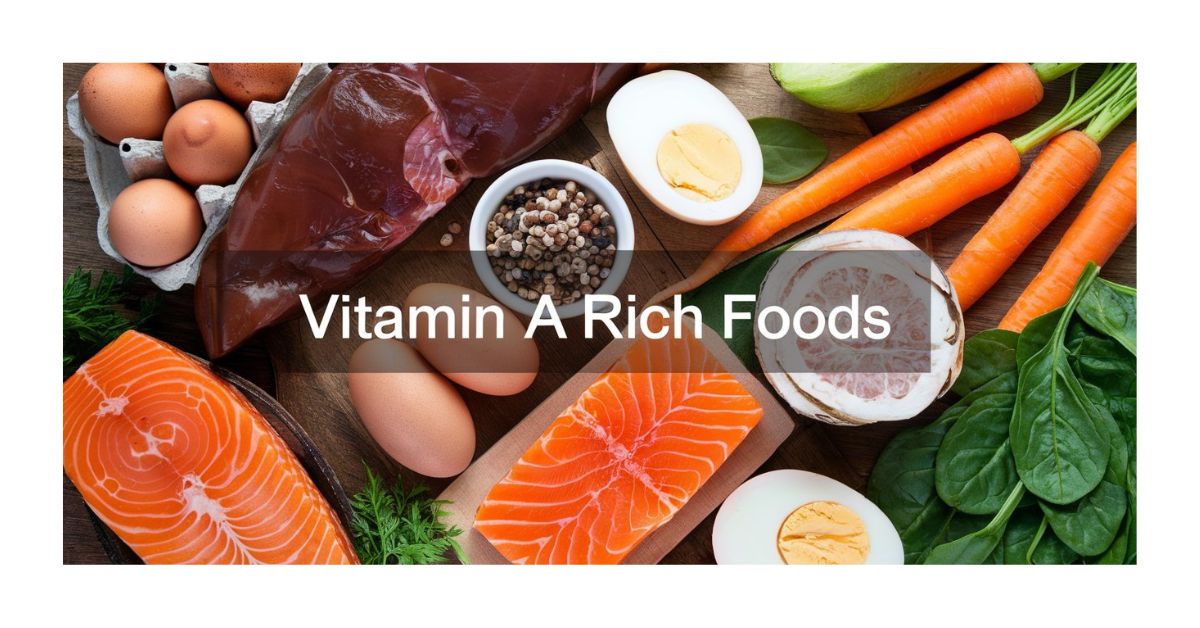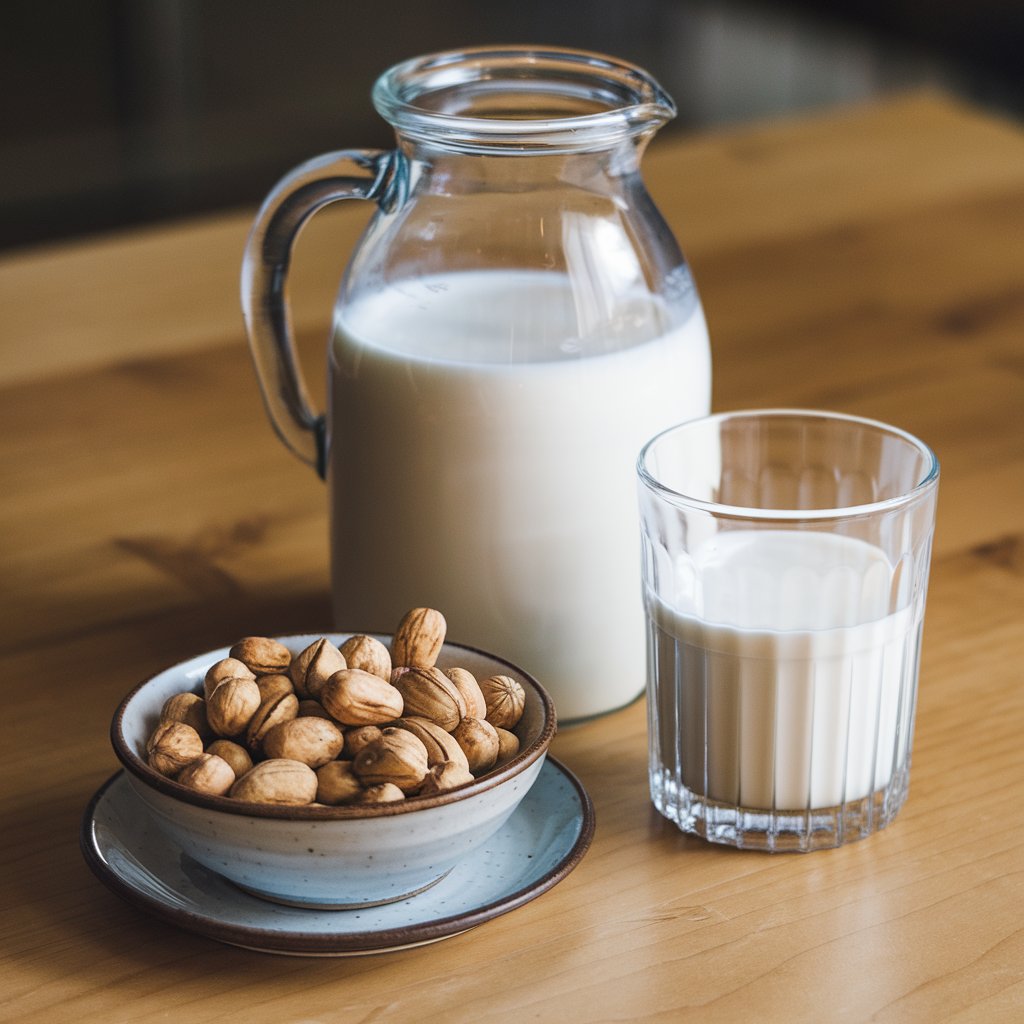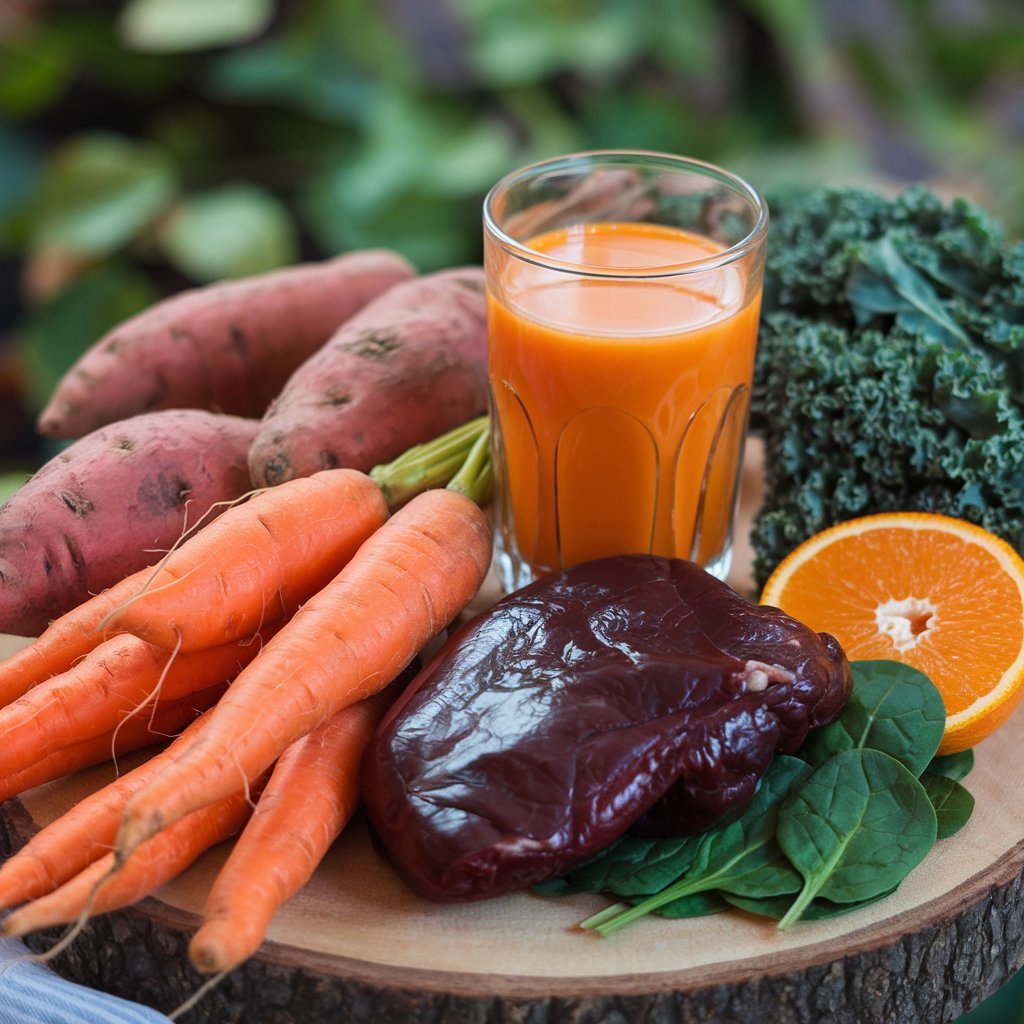
Comprehensive Guide to All Sources of Vitamin A
Vitamin A is essential for maintaining optimal health, supporting vision, immune function, and cell growth. As the body cannot produce it independently, it’s necessary to obtain it from external sources. In this article, we explore all the major sources of Vitamin A, focusing on both animal- and plant-based options and supplements. Learn more…
What is Vitamin A?
Vitamin A is a fat-soluble vitamin that comes in two primary forms:
- Preformed Vitamin A (Retinoids): Found in animal products, it includes retinol and retinyl esters, the active forms of Vitamin A that the body can use immediately.
- Provitamin A Carotenoids: Found in plant-based foods, the body converts these into active Vitamin A, the most common of which is beta-carotene.
Now, let’s dive into all the rich sources of Vitamin A from different food categories.

Animal-Based Sources of Vitamin A
Animal-based foods are abundant in preformed Vitamin A, providing the body with immediate access to this essential nutrient. Here are the key animal sources:
1. Liver
The liver is by far the richest source of Vitamin A. A single serving of beef liver provides more than 700% of the daily recommended intake. The chicken liver also offers a significant amount.
- Beef liver (3 ounces): 6,582 micrograms (731% DV)
- Chicken liver (3 ounces): 3,270 micrograms (364% DV)
2. Fish Oils
Fish liver oils, especially cod liver oil, are excellent sources of Vitamin A and Omega-3 fatty acids, essential for heart and brain health.
- Cod liver oil (1 tablespoon): 4,080 micrograms (453% DV)
3. Dairy Products
Full-fat dairy products like milk, butter, and cheese contain retinol, though in smaller amounts compared to liver.
- Whole milk (1 cup): 68 micrograms (8% DV)
- Cheddar cheese (1 ounce): 284 micrograms (32% DV)
- Butter (1 tablespoon): 97 micrograms (11% DV)

4. Eggs
Egg yolks are a reliable source of Vitamin A and can be incorporated into various meals.
- Egg (1 large): 75 micrograms (8% DV)
5. Fish (Salmon, Mackerel, Tuna)
Fatty fish like salmon, mackerel, and tuna offer modest amounts of Vitamin A along with other vital nutrients such as protein and healthy fats.
- Salmon (3 ounces): 59 micrograms (7% DV)
Plant-Based Sources of Vitamin A
Plant-based foods provide provitamin A carotenoids, converted into active Vitamin A in the body. These sources are vital for individuals following a vegetarian or vegan diet.

1. Sweet Potatoes
Sweet potatoes are the top plant source of beta-carotene, a precursor to Vitamin A. The vibrant orange color of sweet potatoes indicates their high carotenoid content.
- Sweet potato (1 medium, baked): 1,096 micrograms (122% DV)
2. Carrots
Carrots are famous for their beta-carotene content and are an excellent source of Vitamin A.
- Carrot (1 medium, raw): 509 micrograms (57% DV)
3. Spinach and Kale
Dark leafy greens like spinach and kale are rich in carotenoids, providing substantial amounts of Vitamin A, along with other beneficial nutrients like Vitamin C and iron.
- Spinach (1 cup, cooked): 943 micrograms (105% DV)
- Kale (1 cup, cooked): 885 micrograms (98% DV)
4. Pumpkin
Pumpkin is another bright orange vegetable packed with beta-carotene. It is highly versatile and can be used in soups, pies, and even smoothies.
- Pumpkin (1 cup, cooked): 1,905 micrograms (212% DV)
5. Red Bell Peppers
Red bell peppers provide a good amount of Vitamin A and add a pop of color and flavor to your meals.
- Red bell pepper (1 medium, raw): 117 micrograms (13% DV)
6. Mangoes and Cantaloupes
Fruits like mangoes and cantaloupes are excellent plant sources of Vitamin A and provide a delicious, natural sweetness.
- Mango (1 cup, sliced): 89 micrograms (10% DV)
- Cantaloupe (1 cup, diced): 299 micrograms (33% DV)
Fortified Foods as a Source of Vitamin A
Many everyday products are fortified with Vitamin A to help people meet their dietary requirements, especially in regions with common deficiencies. These fortified options include:
- Fortified Breakfast Cereals: These cereals often provide 10-15% of the daily Vitamin A requirement per serving.
- Fortified Plant-Based Milk (Almond, Soy): Many plant-based milks are enriched with Vitamin A, making them an excellent option for vegans and lactose-intolerant individuals.
Vitamin A Supplements
For individuals struggling to meet their Vitamin A needs through diet alone, supplements can be an effective solution. Retinyl palmitate and retinyl acetate are the most common forms found in supplements. While effective, caution is necessary as excessive Vitamin A intake from supplements can lead to toxicity, especially with preformed Vitamin A.
Who Needs Supplements?
- Pregnant women (in moderation)
- Individuals with fat malabsorption disorders
- Elderly individuals with poor dietary intake
The Importance of Balanced Vitamin A Intake
While it is crucial to consume adequate Vitamin A, overconsumption can have adverse effects. Hypervitaminosis A, resulting from excessive Vitamin A intake, especially from animal sources or supplements, can lead to symptoms such as nausea, headaches, dizziness, and even liver damage in severe cases. On the other hand, insufficient Vitamin A intake can result in night blindness, increased susceptibility to infections, and, in severe cases, xerophthalmia, which can lead to permanent blindness.
The recommended daily intake (RDI) of Vitamin A for adults is:
- 900 micrograms (3,000 IU) for men
- 700 micrograms (2,333 IU) for women
It is best to meet your Vitamin A needs through a balanced diet incorporating both animal and plant sources, with supplements used only when necessary.
Conclusion
Vitamin A is essential for maintaining good vision, supporting the immune system, and promoting overall health. With a variety of food sources ranging from liver and fish oils to sweet potatoes and leafy greens, it’s relatively easy to meet your daily Vitamin A needs through a well-rounded diet. Be mindful of balancing your intake, ensuring you’re getting just the right amount to avoid both deficiency and toxicity.
FAQs on Vitamin A
1. What is Vitamin A, and why is it important?
Vitamin A is a fat-soluble vitamin crucial for maintaining healthy vision, supporting the immune system, and promoting proper cell growth. It also helps in the maintenance of skin health and reproductive functions.
2. What are the two main types of Vitamin A?
Vitamin A comes in two primary forms:
- Preformed Vitamin A (Retinoids): Found in animal-based foods like liver, fish oils, and dairy products.
- Provitamin A Carotenoids: Found in plant-based foods such as sweet potatoes, carrots, and spinach, which the body converts into active Vitamin A.
3. How much Vitamin A do I need per day?
The Recommended Daily Intake (RDI) for Vitamin A is:
- 900 micrograms (3,000 IU) for men
- 700 micrograms (2,333 IU) for women
4. Can I get too much Vitamin A?
Yes, overconsumption of Vitamin A, particularly from supplements or animal-based sources, can lead to hypervitaminosis A, which can cause symptoms like nausea, dizziness, and even liver damage in extreme cases.
5. What are the signs of Vitamin A deficiency?
Symptoms of Vitamin A deficiency include:
- Night blindness
- Dry skin
- Increased risk of infections In severe cases, deficiency can lead to xerophthalmia, a condition that can cause permanent blindness.
6. Can I get enough Vitamin A from a plant-based diet?
Yes, you can obtain sufficient Vitamin A from a plant-based diet by consuming foods rich in beta-carotene, such as sweet potatoes, carrots, and leafy greens. These foods provide provitamin A, which the body converts into active Vitamin A.7. Should I take Vitamin A supplements?
Supplements may be necessary for certain individuals, such as those with fat malabsorption issues, pregnant women (under medical guidance), and people with poor dietary intake. However, it’s essential to avoid excessive intake as it can be harmful

Leave a Reply